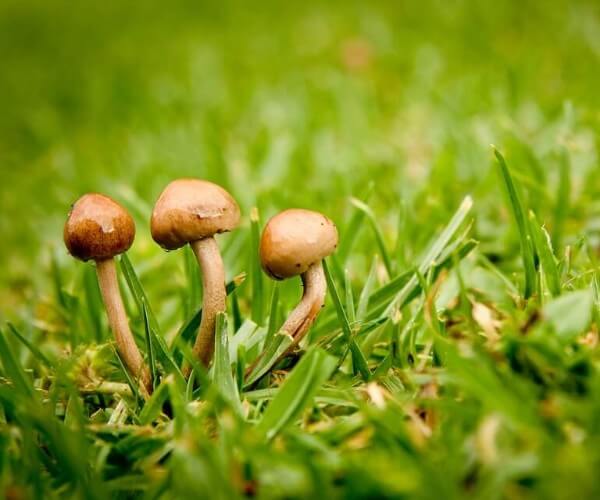- Turf
- Artificial
- Soil
- Timber
- Composite Decking
- Paving & Stone
Get In Touch With Our Experts Today!
Give us a Call! - Seed & Fertiliser
- Dressing
- Bark

August 11, 2017
So you’ve spent time and money on buying and laying your new turf and other bits to make your garden the envy of all your friends and now disaster has struck – you have found mushrooms growing amongst your beautiful lawn!
Fungi are one of the most active of all micro-organisms found in turf and can have a positive effect on your lawn as they supply it with nutrients that are important for growth and wellbeing. Whilst it is not a good idea to try and remove all traces of fungus (mushrooms, toadstools etc…) from your turf, you need to be able to identify and manage them as they can lead to diseases such as red thread, fusarium patch and rust disease.
Lawns are full of fungal spores that are usually harmless, although certain conditions can cause them to germinate and lead to the harmful diseases mentioned above.
There are several causes of lawn fungus, most commonly:
Whilst some of these are uncontrollable factors – the unpredictable British weather for example – keeping an eye on how much or how little you are watering your turf and mowing to appropriate heights are both aspects of lawncare that you can control.

Signs your lawn may have a fungal disease:

There are quite a few fungal diseases that can affect your lawn. The disease varies from certain times of the year, under certain weather conditions and the quality of the soil underneath.
Toadstools are naturally occurring, and it shouldn’t come as too much of a surprise if you find these in your lawn, new or old. They are a sign of a healthy lawn – toadstools aren’t the main part of a fungus.
Fungi grows as very thin cotton-like strands called ‘mycelium’, which disappear as it is dried by the sunshine. Although mushrooms and toadstools within your lawn are generally harmless, they should not be consumed.
Brown patch are usually found in summer. A summer lawn disease that’s caused by a fungus called Rhizoctonia. The disease begins to come visible when temperatures reach 18°, but the most active growth of brown patch lawn disease are when humidity levels are very high hitting temperatures of 25-30°.
Fusarium Blight, also known as Necrotic Ring Spot, is a soil bound disease that occurs during the hot and dry conditions of summer.
Dollar spot occurs in the summer and autumn seasons. During these seasons of warm days, cool nights and high humidity. The turf stays moist for longer from shade in the morning, light rain and lack of air movement which encourages the development of the disease.

If you are looking to limit the development of fungus, we recommended that you:
In terms of prevention, there are several things that you can do in order to try and fend off fungal issues. It’s a good idea to aerate your lawn at the end of summer as the extra use and footfall during the warmer months means that the ground will be hard and compacted. You should also rake your lawn in order to remove any thatch and allow the grass to breathe. It’s also important to be careful when watering your lawn to ensure that you are not leaving soggy patches or puddles in your grass. In order to develop a strong root system that can protect itself against fungal diseases, you should water thoroughly but less frequently.